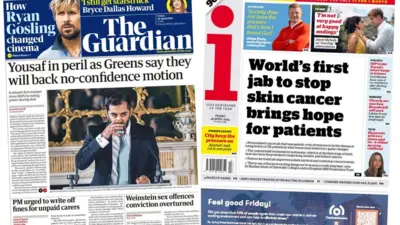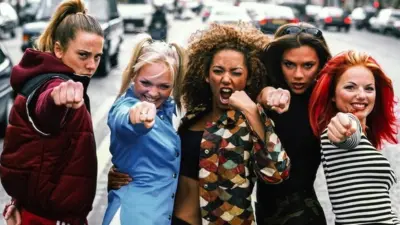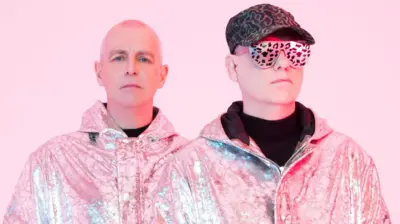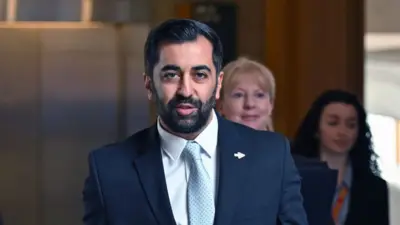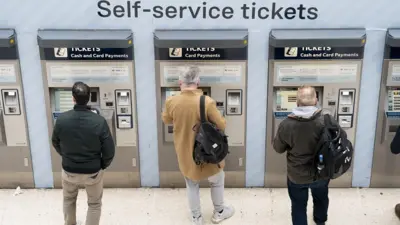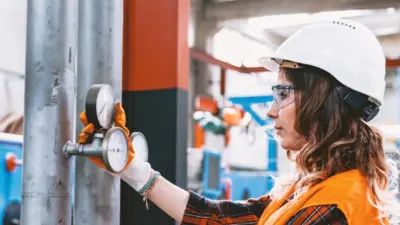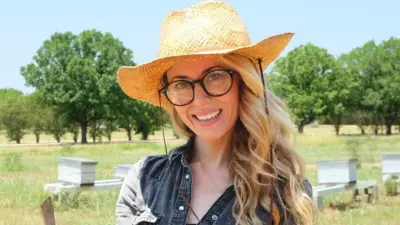We've updated our Privacy and Cookies Policy
We've made some important changes to our Privacy and Cookies Policy and we want you to know what this means for you and your data.
Why is there a CO2 shortage and how will it hit food supplies?
Image source, Getty Images
The price of CO2 used to produce food and drink will be five times higher, under a deal to restart production.
But there will be no "significant impact" on prices in supermarkets, the government says.
What food and drink is CO2 used for?
Food grade CO2 is used for hundreds of products:
- to carbonate water, soft drinks and alcoholic drinks
- to dispense drinks and beers in pubs
- to promote the growth of plants - such as cucumbers - in greenhouses
- to stun pigs and chickens before slaughter
- for packaging meats, baby foods, fresh foods and baked products (CO2 extends shelf life by preventing bacteria)
- to keep food fresh in transport (CO2 is used in the form of dry ice and snow)
Source: Food and Drink Federation/Global Counsel
Why is there a CO2 shortage?
CF Industries produces CO2 as a by-product of its main product, fertiliser.
Its two main plants, on Teesside and in Cheshire, had stopped work because of rises in wholesale gas prices.
Because the fertiliser factories stopped working, there had been a cut of 60% of the UK's food-grade carbon dioxide supply.
What has the government agreed?
It will meet the full operating costs - said to be tens of millions of pounds - of CF Industries' plant on Teesside for three weeks "whilst the CO2 market adapts to global prices".
There will be a cap to the overall cost.
As part of the deal, the food industry will have to pay five times more for carbon dioxide - with prices rising from £200 per tonne to £1,000.
Won't food prices go up?
Environment Secretary George Eustice said the increased cost of CO2 would not have a "significant impact" on prices.
He said that while food prices were increasing because of issues including oil prices and labour shortages, carbon dioxide was "a tiny proportion" of overall costs.
How have food supplies been affected?
The CO2 issue has caused a "big supply issue", one supermarket executive told the BBC.
Grocery delivery firm Ocado warned it had "limited stock" of some frozen items.
The Food and Drink Federation said with shoppers were likely to notice shortages in poultry, pork and bakery products.
The British Retail Consortium welcomed payments to restart CO2 production, but said timings for the resumption of supplies would "still be tight".
What else is CO2 used for?
Remaining UK carbon dioxide production is being prioritised for medical uses.
It is used during some invasive surgeries to stabilise body cavities, to stimulate breathing and to get rid of warts and moles.
CO2 is also used by the nuclear industry as a coolant.
The Times reported that ministers were concerned that six reactors might have to close because of the supply problems.
CO2 is also used commercially in fire extinguishers, for inflating life rafts and life jackets, and as a liquid solvent.
Wasn't there a CO2 shortage in 2018?
Yes there was - caused by a usual summer drop in production, and a heatwave which increased demand for drinks and frozen products.
What is CO2?
At room temperature, carbon dioxide is a colourless, odourless gas.
In the Earth's atmosphere, increased levels of CO2 contribute to global warming.
It is naturally produced when:
- humans and animals breathe
- during combustion (for example petrol and diesel in cars)
- things ferment or decompose
Its molecules have one carbon and two oxygen atoms, which is why its chemical formula is CO2.
Top Stories
Features & Analysis
Most read
Content is not available
